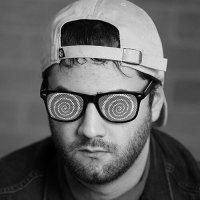Twin Peaks and The Power of The Recurring Detail
A new book considers the totems, themes, motifs, and other significant recurring details in David Lynch and Mark Frost's Twin Peaks.
Twin Peaks lives on, 26 years long years after FBI Special Agent Dale Cooper opened up an investigation in the curious death of Laura Palmer. It lives on through fans that never wanted to leave the strange Washington town, the critics that noted the short-lived series’ cultural impact, and the creators, David Lynch and Mark Frost, who fear not a victory lap, but truly believe that have more stories to tell in this world when the Twin Peaks revival hits Showtime in 2017.
As a special treat for Twin Peaks fans and Den of Geek readers, we have an excerpt from a book that is sure to fill any gaps in your knowledge of the series. Twin Peaks FAQ: All That’s Left to Know About a Place Both Wonderful and Strange was written by David Bushman and Arthur Smith, and published by Applause Theatre and Cinema Books.
They’ve loaned us their observations on the totems, themes, motifs, and other significant recurring details from the chapter “Take Another Look, Sonny.”
It’s gonna happen again.
Electricity
Electricity, like everything else, behaves eccentrically in Twin Peaks. Lights flicker and strobe, microphones squeal, and music plays unexpectedly; TV static “snow,” swaying power lines, and a lonely traffic light number among the series’ most potent visual motifs.
Theories abound regarding the significance of these electrical manifestations, the consensus being that electrical displays indicate the machinations of the White and Black lodges, and that electricity is the medium through which lodge spirits enter the mundane world. Perhaps; Leland significantly starts a ceiling fan before attacking Laura, presumably summoning Bob. In FWWM’s confounding “convenience store” scene, one of the creepy figures present enunciates “e-lec-tric-i-ty!” with exaggerated significance, perhaps indicating the element’s value as a commodity in the spirit realm, along with creamed corn and Formica.
On a subtextual level, the unreliability of electricity and electronic tools supports some of Twin Peaks’ key themes: the flickering lights are a stark representation of the show’s fascination with duality—light and dark, alternating in less than the space of a second.
Considered further, the trope suggests the ultimate futility of attempting to uncover or communicate the “truth” in the face of the world’s essential mystery. An electric light may partially illuminate, but its flickering obscures and disorients more than it reveals. An amplified public address drowns in feedback. A video camera records a figure that is no longer there. Intercoms and hearing aids fail repeatedly. Technology is nothing against the impenetrable secrets of this world and the next, akin to a candle gutteringin a hurricane.
Aesthetically speaking, flickering lights very effectively imbue their scenes with an atmosphere of unease and tension. It’s an elegantly simple tactic straight from the Twin Peaks playbook, but its first appearance was not by design; when filming the pilot episode’s scene in which Cooper first examines Laura’s body, the fluorescent bulb above the gurney began to die . . . and one of Twin Peaks ’ signature effects was born. Lynch liked it so much he wound up flickering the light himself.
The Traffic Light
It’s a lovely, unaccountably haunting image, recurring in the series seemingly at random: a single traffic light, suspended in the dark space of night, slowly cycling through its mute color-coded commands.
What does it mean? Maybe it’s nothing more than an atmospheric detail, a visual bit of punctuation helping to stitch together disparate scenes into an aesthetically consistent whole. Or perhaps it’s meant to function as a caesura, or rest, does in a piece of music.
In the story, this location marks Laura and James’s last encounter, in which Laura makes her choice to turn away from James (understandable), and to enter the woods and ultimately meet her grisly end. It makes sense thematically for the scene to play out here: Laura stands at an intersection, and makes a wrong turn.
For us, however, there seems to be a little more to it; why do we feel a little mournful toward, a bit chilled by, this utterly mundane object when it appears? It’s a lonely-looking thing, a solitary sentinel swaying in the chill wind, seemingly unseen and unheeded in the small hours of a Twin Peaks night, and maybe that’s the thing that pulls at us.
It’s a symbol of authority and order, of protection from chaos and violence, blindly executing its function, mechanically, pointlessly, protecting no one. The law won’t save you; witness its forsaken beacon, quietly failing to push back the dark.
Coffee, Pie, Doughnuts
Forget wood from the Packard Sawmill; Twin Peaks’ most important commodities are caffeine and pastry. The sheriff’s office is absolutely infested with heaping stacks of assorted doughnuts, characters consume oceans of coffee, and the pie at the Double R drives sober men to heedless gluttony.
The emphasis on comforting sweets and simple honest java is undoubtedly meant to poke satirically at the exaggerated wholesomeness of Twin Peaks’ surface quasi-1950s atmosphere (and perhaps at Lynch’s own sweet tooth—he has referred to sugar as “granulated happiness”). Cooper’s bottomless enthusiasm for the treats is interesting, suggesting even our incorruptible straight-arrow hero may be tempted by ultimately harmful sensual pleasures.
This being Twin Peaks, can we tease out some more sinister implications from the town’s sweets-and-coffee jones? We posit that the ostensibly benign mind-altering substances glucose and caffeine represent another duality: they are socially sanctioned stimulants that the “good” people of Twin Peaks depend on to get through the day, as opposed to the cocaine brought in over the border under cover of night that fuels the transgressive actions of the community’s less upstanding element.
Or maybe they’re just that delicious.
You can purchase Twin Peaks FAQ: All That’s Left to Know About a Place Both Wonderful and Strange here.
